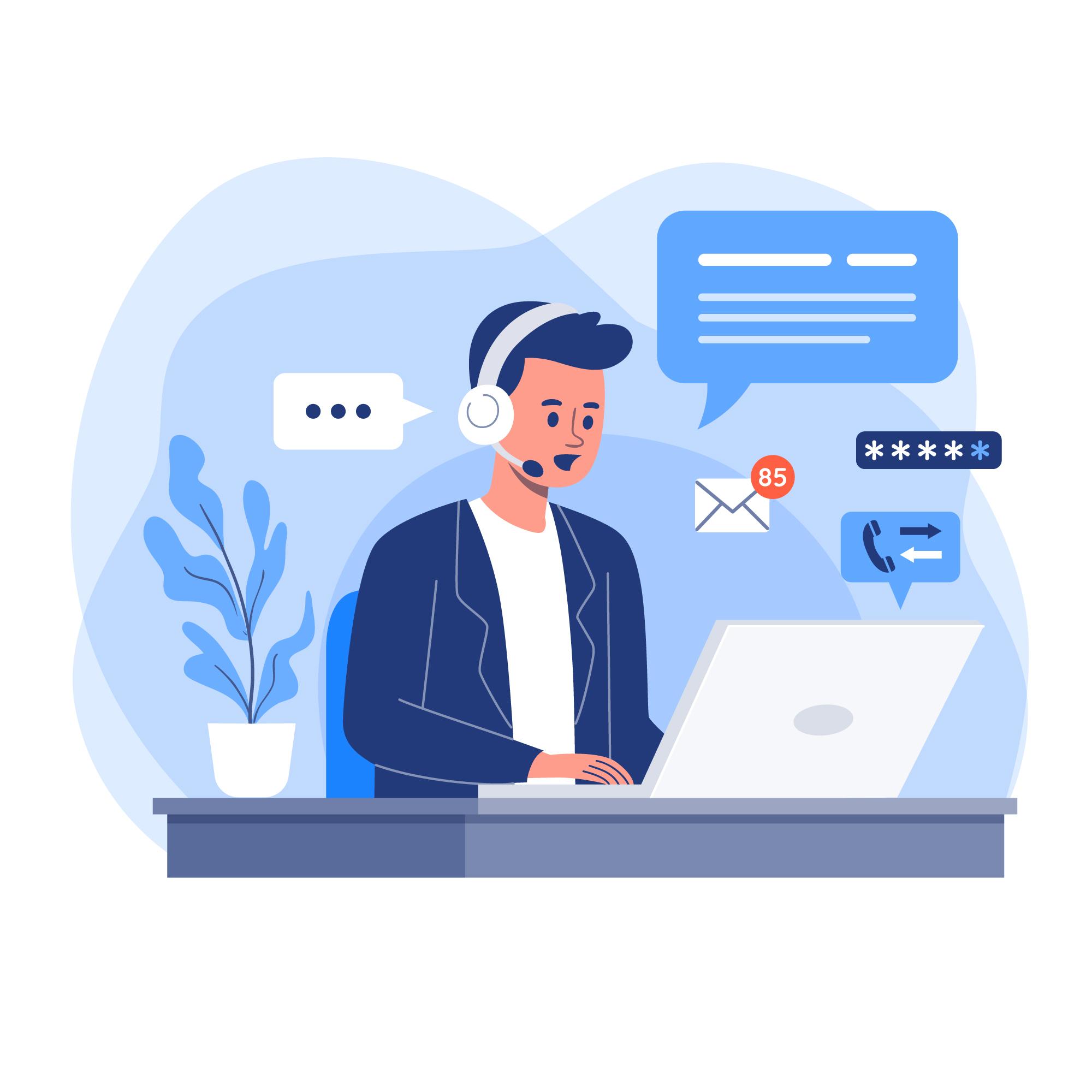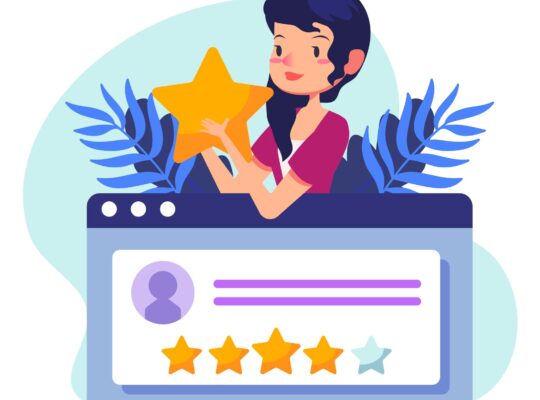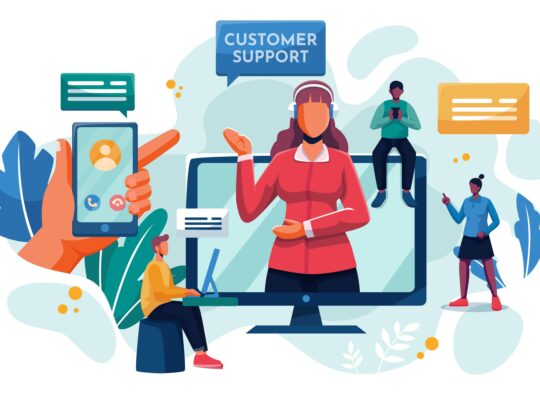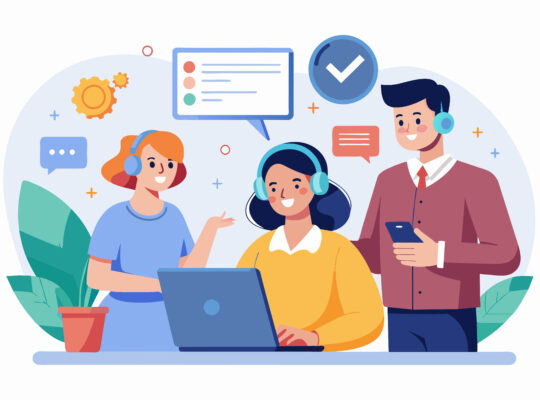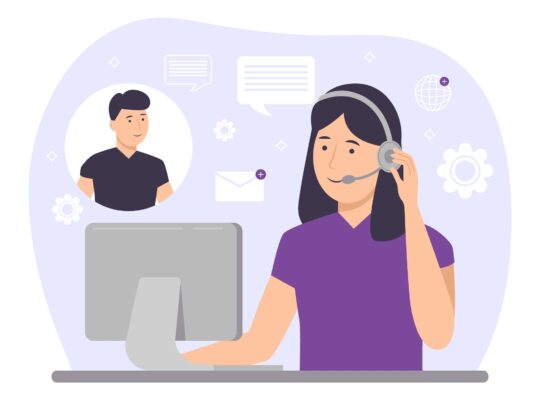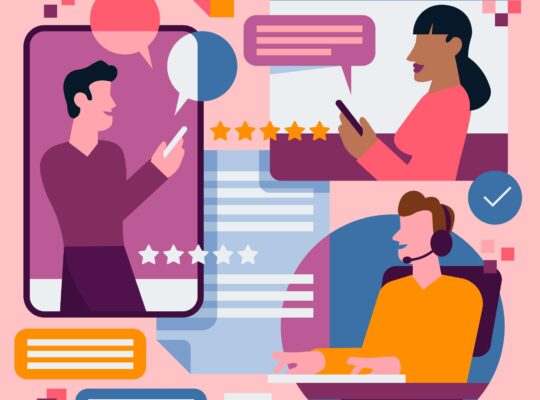| Customer Service Leadership | ||
| Instructor: Brad Cleveland | ||
| Released: 8/22/2022 | Course Details 1h7m Intermediate | |
| Skills Covered Customer Service Management Team Leadership | Course Link | |
| Professional Certifications and Continuing Education Units (CEUs) Project Management Institute – PDUs: 1 hour | ||
| Fast-evolving customer expectations, emerging service channels, hybrid work arrangements, and the multifaceted nature of delivering service are just a few of the developments you’ll face as a customer service leader. In this practical course, Brad Cleveland covers how to align customer service with your organization’s goals, identify and meet customer expectations, cultivate an engaged team, and get the support and resources you need. Brad explains why effective customer service leadership is so important, then walks you through aligning service with your organization’s vision, understanding customer expectations, establishing a key performance indicator, and boosting the value of customer service. He also shows you how to engage with customers, build a strong service approach, and reach your organizational potential. Source: LinkedIN Learning | ||
Establishing a Customer Service Foundation
Why effective service leadership is so important
If you consistently deliver great service, the connected world is a powerful friend.
- Evolving customer expectations
- Value to others in the organization
- Discovery Process
Customer Service Misconceptions
- Service is a necessary cost
- Being OK is good enough
- We can benchmark clothes to find “the formula”
- Great service is expensive
Aligning service with your organization’s vision and mission
Oftentimes, the company’s vision and mission don’t align with service.
“We put our customers first. But keep the time you spend with them to three minutes.”
“We deliver world-class service. But we sure don’t have the resources we need on Mondays.”
How To Fix
- Create clear direction
- Expectations and standards should flow directly from the organization’s vision, mission, and values.
- Creating a customer journey map provides eye-opening information to your customers.
Stories from the field: Aligning service and mission
Story about a parking attendant experience which was off brand for the hotel. The service was provided by a third party. It’s important to ensure through coaching and training that 3rd parties understand the brand and the expected experience.
Understanding customer expectations
Ten Expectations of Service Interactions
- Be accessible
- Treat me courteously
- Be responsive
- Do what I ask promptly
- Provide well-trained employees
- Tell me what to expect
- Meet your commitments
- Do it right the first time
- Follow up
- Be socially responsible and ethical
Tangibles
- Facilities
- Design
- Neatness of employees
- Amenities
- Others
Recommendations
- Get input from customers and employees firsthand.
- Trust your instincts
- Make service easy and resolve issues quickly
Establishing a Key Performance Indicator
Alternative metrics to KPI
- Customer Satisfaction (CSAT) – measures satisfaction, not loyalty
- Net Promoter Score – based on the question – “How likely is it that you will recommend us to others?”
- Customer Effort Score (CES) – “How easy was it to resolve your issue?”
- Customer Sentiment – rather than a survey, this score is an analysis of feedback. Uses AI, using recordings, social media or other customer information.
Follow Customer Behavior
- Do they continue to buy?
- What do they say in reviews and social channels?
Boosting the value of customer service
- Level 1 – Efficiency
- Level 2 – Customer Satisfaction and Loyalty
- Level 3 – Strategic Value – contributes value to other functions of the organization. Insight on what customer wants/expect, resolve issues that can be fixed in manufacturing
Serves as an early warning system. See where and how to improve self-service capabilities
Sources of Information
- The interactions themselves
- Assessing the impact of improvements
Engaging with Customers
Developing your service strategy
Customer Access Strategy
- Customer segments – how customers are logically segmented
- Type of interactions
- Access channels – how is service delivered; in person, video, phone, etc.
- Hours of operation
- Accessibility – how long do customers have to wait
- Routing
- People and technology resources required
- Information required – what information needs to be accessible
- Analysis and improvement – how will information captured help our customers and our products
- Guidelines for deploying new services – technology needed, investment guidelines
Stories from the field: Customer access strategy
Recounts a story from a mobile company that designed an intranet page for service that identified team members, information, tools and the plan also included who is responsible for keeping each area current.
Instilling service supporting metrics
Seven Aspects of Service
- Workload forecast
- Staff and resources required
- Accessibility – wait times (SLA)
- Quality of interactions – understanding customers needs, resolving the issue, recording of data, input from customer surveys and samples of customer service interactions
- Employee engagement – engaged employees provide better service
- Strategic value – what are you learning in customer service that can be applied to other departments to improve software, products or services
- Customer satisfaction – NPS, customer effort score, or similar
Putting yourself in your customer’s shoes
- Direct input – talk with customers
- Social posts – great insight, although unfiltered information may hard to digest
- Focus groups
- Employee input
- Operational data
- Product and service reviews
Stay Tuned In
- Identify many sources of insights
- Find time for this aspect of leadership
- Be ready to work through initial awkwardness
Creating customer advocates
Internal Perspective
Focusing the organization on doing what’s best for customers
External Perspective
Customers advocate for us, spreading the good word about our organization.
Customer Advocacy
The actions we take to focus the organization on doing what is best for customers, which in turn rewards us with loyal customers.
Results of Customer Advocacy:
- Guide individual reactions – offering a cheaper flight later in the evening
- Catalyze involved decisions – keeping customer service opened longer on weekends
- Drive dramatic change – restructuring the organization to be more focused on customer needs.
Turning Loyal Customers into Brand Advocates
- Don’t forget the reason you have loyal customers.
- Enable an engaged customer service operation.
- Find ways to ask customers to write reviews.
- Provide involved engagement for advocates. (VIP or Inner Circle)
Building a Strong Service Approach
Cultivating a customer-focused culture
Seven Standards
- Hire the right people – hire the passion and train the skills.
- Put employees first
- Empower employees to make real-time decisions
- Keep the focus on customers
- Communicate effectively
- Establish a customer-focused culture
- Cultivate support tools and processes
Understanding and improving the service process
Customer Service Involves Many Variables
- Employees
- Systems
- Policies
- Customers
- Channel preference
- Knowledge of service
- Expectations
- Mood
Key Questions
- What is causing repeat contacts?
- What are customers complaining about?
- Where are you making mistakes?
- Where are the innovation opportunities?
Stories from the field: Improving the service process
Recounts a story where, as a team, they were now empowered with the insight necessary to intelligently discuss how far technical support should take things.
Prioritizing improvements in your service approach
8 Key Factors to Consider when Prioritizing Customer Initiatives
- Safety
- Frequency
- Magnitude
- Timing
- Customer segment
- Prevention
- Brand impact
- Strategy
Three Recommendations
- Identify factors for prioritizing customer initiatives
- Apply in your organization
- Guide your focus and priorities
Leveraging technology
- Connectivity and Collaboration
- Workforce Optimization – forecasting tool, highlights difference between actual and planned schedules
- Quality Monitoring Systems – records interactions to be reviewed
- Customer Relationship Tools – consolidated views of all customer contacts
- Artificial Intelligence – self-service capabilities
- User-End Devices, Platforms and Applications
Three Recommendations
- Create ongoing IT support
- Involved yourself in the technology road map
- Question how you can leverage technology to make things easier
Principles of effective budgeting
- View the budget as an opportunity
- Focus on results
- Ensure that budgeting is an extension of resource planning
- Maximize cross-functional resources
- Ensure honesty
- Highlight investment opportunities – promising technologies, coaching initiatives
- Make it human – provide real examples
Reaching Your Organizational Potential
The importance of celebrating wins
Because customer service can appear endless and takes a toll on people, it’s important to celebrate wins throughout the journey.
Celebrations
- Boost productivity
- Strengthen culture
- Improves communication
- Improve relationships
- Celebrate accomplishments
Why Don’t We Celebrate?
- Not enough time
- Lack of awareness
- Unrealistic goals
Different Levels of Leadership
- Level 1 – Highly capable individual – contributes talent, knowledge, skills, and good work habits.
- Level 2 – Contributing team member – works well with others to produce results
- Level 3 – Competent manager – can organize employees and resources to attain results
- Level 4 – Effective Leader – catalyzes commitment to a vision and rallies support to achieve high levels of performance
- Level 5 – The Executive – leader who possesses the combination of humility and a ferocious will for the organization to be remarkable. Focus is on leaving the organization stronger and ensuring that it can sustain success.
Building Organizations That Thrive
- Hire capable people – great vision without great people is irrelevant
- Practice humility – look out the window to credit others for success
- See things as a customer
- Build strong systems and processes
Customer Advocacy: Moving from Insight to Action
A structured approach to customer advocacy
- Know your customer
- Create the means to act
- Develop leaders who promote customer advocacy
- Equipping individuals to be prepared and empowered to act
- Establishing effective cross-functional communication
- Take action
- Assess results
- Key outcome is increased customer loyalty
Knowing your customers
- Service Interactions – face-to-face or customer phone support
- Operational Data
- How accessible are you to your customers?
- How long did they have to wait to reach you?
- For what reasons did they contact the organization?
- Did you resolve the problems and how long did it take?
- Surveys
- Customer Reviews – product and service reviews
- Social Posts
- Communities/Online forums
- Focus Groups
- Employee Feedback
Steps to Knowing your Customers
- Brainstorm and identify sources of information available.
- Determine how each source would be useful.
- Narrow sources to those that are the most essential.
- Harness technology.
- Define responsibilities.
Creating the means to act
Seven Important Aspects of Preparing your Organization to Act
- Customer-focused vision and mission
- Customer-focused strategy
- Product-Focused Organizations start with products and services and seek customers for them.
- Customer-Focused Organizations start with customers in mind and create solutions for them.
- Support of senior leadership
- Cross-functional collaboration
- Customer-focused goals and metrics
- Supporting tools and processes
- Training on customer advocacy
- Tools for analyzing and reporting customer data
- Internal service level agreements
- Communication plan
- Engagement with promoters
Prioritizing and taking action
Prioritization Criteria
- Safety
- Frequency
- Magnitude
- Timing
- Customer Segment
- Prevention
- Brand Impact
Assessing results
- Decide on the measures you will use.
- Establish a baseline of those measures.
- Net Promoter Score
- Customer Satisfaction (CSAT) – How would you rate your experience?
- Customer Effort – How easy was it to handle the issue? (7 point scale)
- Follow-up Email – How did the agent do? How was your experience? NPS?
- Operational Metrics
- Time to respond
- Resolution Rate
- Unresolved Problems
- Customer Behavior
- Do customers continue to buy?
- Do they try new products?
- What are they saying about you on social channels?
- What percent of new customers are from referrals?
| You May Enjoy Brad Cleveland explores Customer Advocacy in more detail in its very own course! Click here to see the course notes! |
